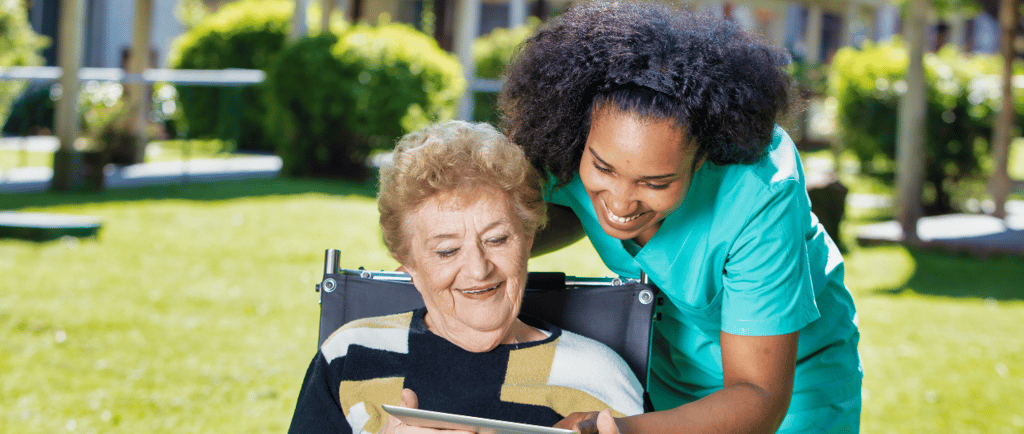The Ripple Effect: How One Act of Care Can Change a Community
When a caregiver steps into a home, it’s more than just help for one person — it’s a spark that spreads. A grandmother regains her independence, and suddenly she’s back to hosting Sunday dinners. A child with special needs gains confidence, and their laughter inspires neighbors. A recovering patient gets back on their feet, and their family’s stress melts into joy. This is the ripple effect of Agape Family Healthcare Services. Each client we serve creates waves of positivity — reaching families, friends, and even strangers. We don’t just see patients — we see community builders. And every smile we nurture, every step we support, strengthens the place we all call home. Because care isn’t just personal — it’s powerful.
8/9/20255 min read


Understanding the Ripple Effect of Caregiving
The ripple effect, a concept borrowed from physics, can be directly applied to the realm of caregiving. When an individual engages in an act of kindness or compassion, the positive implications extend beyond the immediate recipient. Caregiving is an intricate tapestry of emotional and psychological connections that foster a sense of community and collective well-being. Through simple acts of care, caregivers can instigate broader social changes that resonate throughout families and communities alike.
This phenomenon is characterized by the way a single act of kindness prompts others to partake in similar actions. For instance, when a caregiver exhibits compassion towards a client suffering from illness or emotional distress, that individual may, in turn, feel motivated to extend kindness to a family member or friend. This chain reaction can lead to a significant uplift in the overall emotional climate of the community. Moreover, caregivers not only enhance the life of their clients but also serve as inspirational figures to family members, who may witness the benefits of empathy and support, further reinforcing the interconnectedness of community relations.
The psychological impact of caregiving cannot be underestimated. Caregivers often provide a sense of security and belonging, which contributes to improving the lives of not just their clients but also their families. The nurturing environment cultivated by caregivers fosters resilience among families, encouraging them to become active participants in community life. Through consistent acts of care, individuals cultivate neighborhood networks that reduce isolation, build trust, and promote mental health, effectively embodying the ripple effect that can revolutionize the collective experience within a community.
Real-Life Examples: Care that Inspires Change
Throughout history, numerous accounts highlight the transformational power of care within communities. One of the most touching examples comes from the story of a grandmother named Eleanor. After undergoing knee surgery, Eleanor faced the potential loss of independence as her mobility was greatly affected. Her granddaughter, Sarah, stepped in to provide care. Through consistent support and encouragement, Sarah helped Eleanor with her rehabilitation exercises. Over time, Eleanor not only regained her strength but also her confidence. This pivotal act of care motivated her to host family gatherings once again. Friends and family were drawn into Eleanor's home, leading to a reinvigoration of social connections within their community. The impact of Sarah’s caregiving extended well beyond their family; it fostered a sense of belonging and support among their neighbors as well.
Another compelling story revolves around a young boy named Jason, who has special needs. Initially, Jason struggled with self-esteem and social interactions at school, often feeling isolated from his peers. His caregiver, Mrs. Thompson, recognized the importance of integrating him into community activities. With her encouragement, she arranged for Jason to participate in a local art program. This experience not only allowed Jason to express himself creatively but also led him to form friendships with other children in the neighborhood. As his confidence grew, he began to contribute to community art displays, inspiring other children with similar challenges to join in, thereby fostering a culture of inclusivity and creativity.
Through these examples, it becomes evident that the effects of caregiving stretch beyond the immediate caregiver-recipient relationship. Acts of care can ignite a ripple effect, encouraging others to become involved and nurturing an atmosphere of support and connection in the community, demonstrating care’s profound influence on collective wellbeing.
The Role of Community in Supporting Caregivers
The importance of community support for caregivers cannot be overstated, as it plays a crucial role in enhancing their capacity to care while ensuring that the overall health of the community is maintained. Caregivers often face immense challenges, often juggling numerous responsibilities that can lead to feelings of isolation and stress. Therefore, a strong community network composed of local organizations, volunteer groups, and community programs is essential to provide the support needed for caregivers to thrive in their roles.
Local organizations serve as pivotal resources, offering training, workshops, and access to information. These entities can not only equip caregivers with essential skills but also foster connections that can alleviate feelings of loneliness. By providing resources such as respite care or mental health services, local organizations create a safety net that enhances the well-being of both caregivers and those they care for. When caregivers feel supported, they can perform their duties more effectively, positively impacting the lives of their clients and the broader community.
Volunteer networks also play a vital role in supporting caregivers. By enlisting community members, these networks can facilitate tasks such as meal preparation, grocery shopping, or transportation, thereby easing the burdens caregivers often face. This collaboration not only helps the caregivers in practical terms but also instills a sense of belonging and unity within the community. Furthermore, community programs can promote awareness about caregiver issues, encouraging broader societal engagement and recognition of the invaluable work caregivers do.
In conclusion, community support systems are indispensable in enhancing the effectiveness of caregivers, promoting not just individual wellness but also the collective strength of the community. By fostering collaborative efforts among various stakeholders, the community can create an environment that nurtures caregivers and empowers them to carry out their essential roles with dignity and resilience.
Creating a Culture of Care: Steps Toward Community Change
Fostering a culture of care within a community is a proactive endeavor that demands both individual and collective commitment. One of the most effective ways to initiate this change is through promoting volunteerism. Encouraging individuals to engage in community service not only addresses immediate needs but also fosters a deeper sense of connection among residents. Organizations can facilitate this by providing opportunities for volunteering that resonate with diverse interests and skills. By offering a range of initiatives, from food drives to park clean-ups, communities can inspire their members to contribute in meaningful ways.
In addition to volunteerism, neighborly support plays a crucial role in strengthening the fabric of a community. Encouraging residents to check in on one another, especially the elderly or those living alone, can help mitigate feelings of isolation. Neighborhood associations or community groups can organize social events designed to bring people together, facilitating personal connections that translate into stronger support networks. Initiatives such as community potlucks, book clubs, or workshops can provide platforms for interaction and collaboration, promoting a culture where care is both expressed and reciprocated.
The importance of mental health resources cannot be overstated in the quest to cultivate a culture of care. It is essential to prioritize mental well-being as a cornerstone of community harmony. Communities must advocate for accessible mental health services and create awareness about their significance. This can involve organizing workshops that equip individuals with tools to cope with stress or providing platforms for open discussions about mental health. Moreover, partnerships with local organizations can enhance the availability of professional support, making it easier for individuals to seek help without stigma.
Ultimately, the ripple effect of these collective efforts can bear profound impact. Each act of care, however small, contributes to a larger transformation, inspiring others to join the movement. By thoughtfully promoting volunteer initiatives, encouraging supportive neighbors, and emphasizing mental health resources, individuals and organizations can play pivotal roles in ushering a cultural shift that exemplifies the essence of community care. This pursuit can pave the way for a more compassionate society, where acts of kindness resonate and thrive.
corporate@afhcs.com
470-982-CARE (2273)
Follow Us
6470 E Johns Crossing Ste 100
Johns Creek, GA 30097 USA
Fax: (470) 819-5215
Contact Us
Follow us on social media to get the latest updates about our services and care packages.
